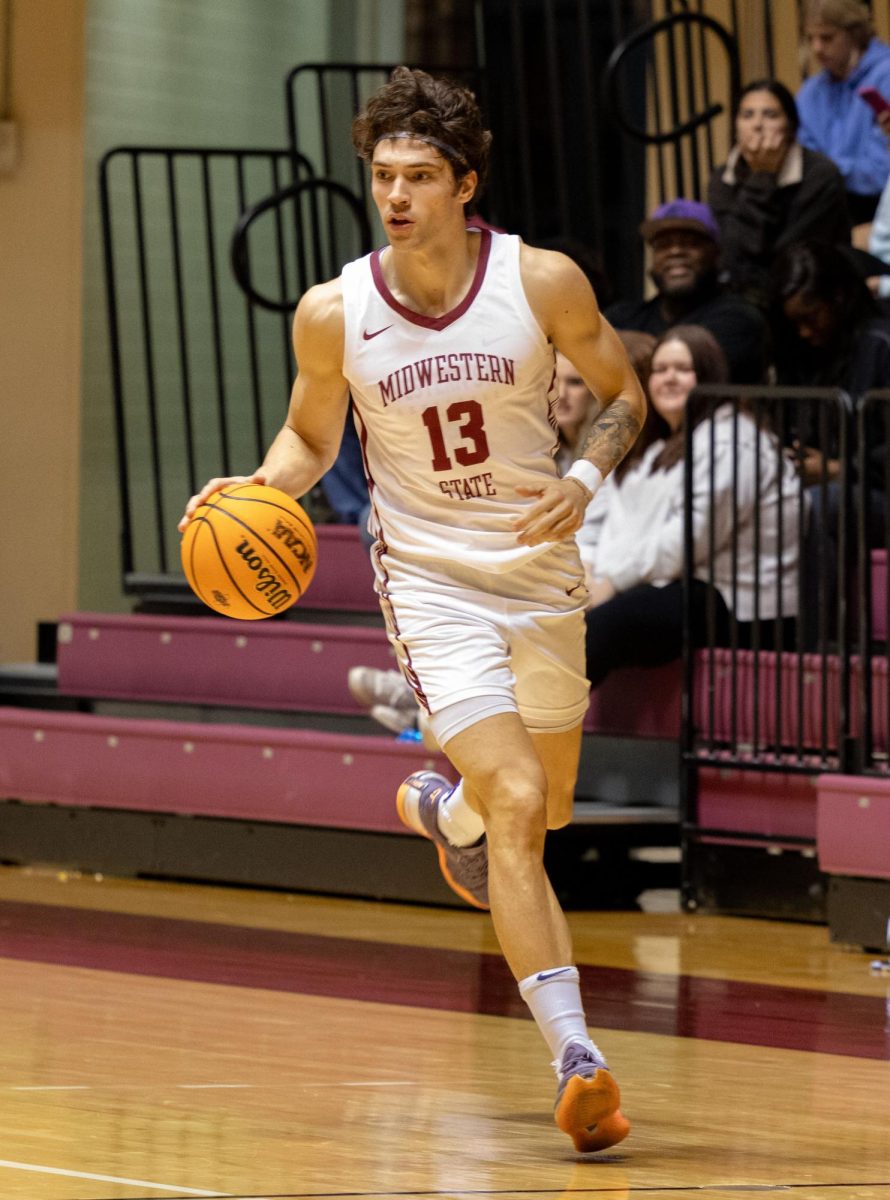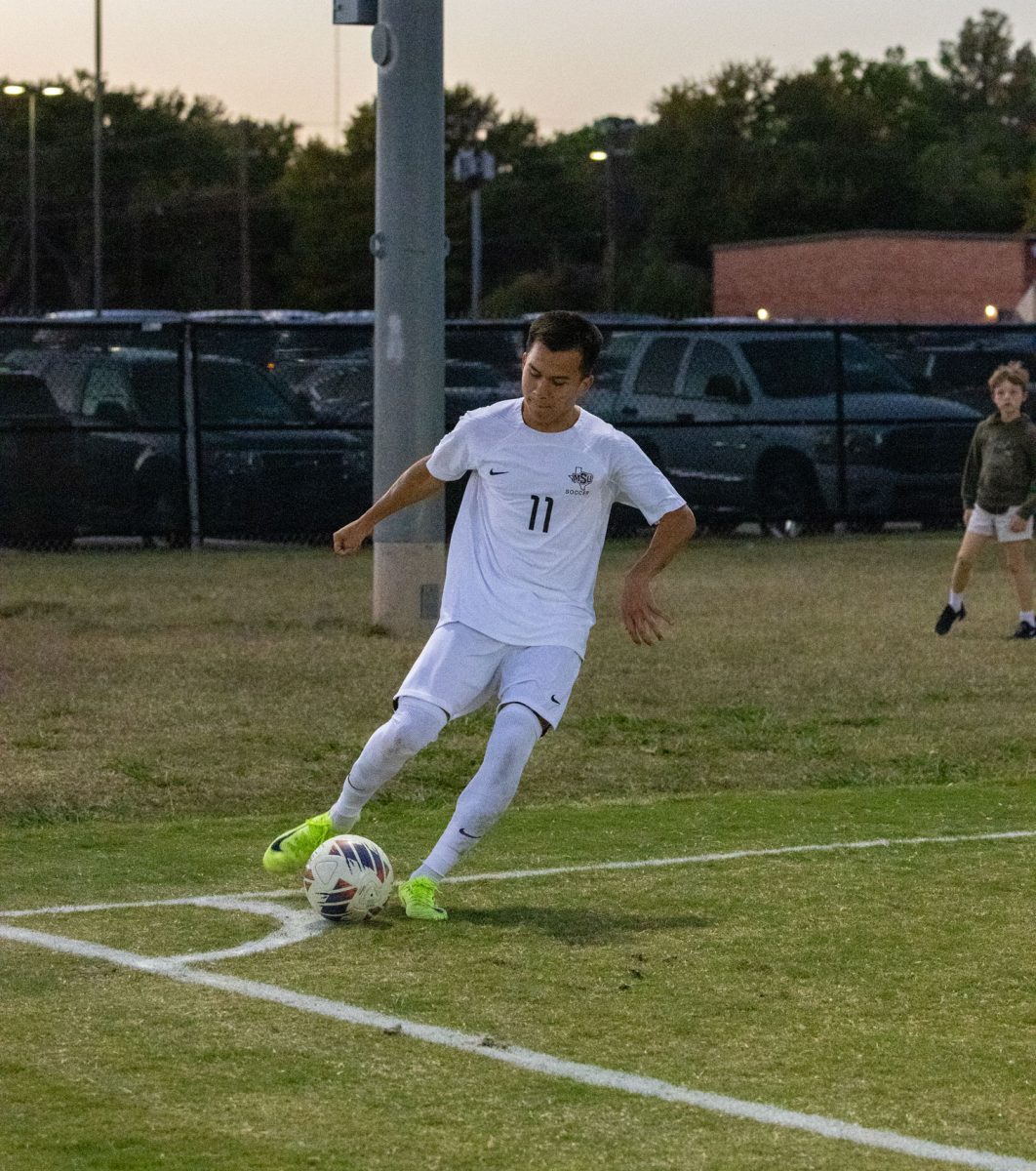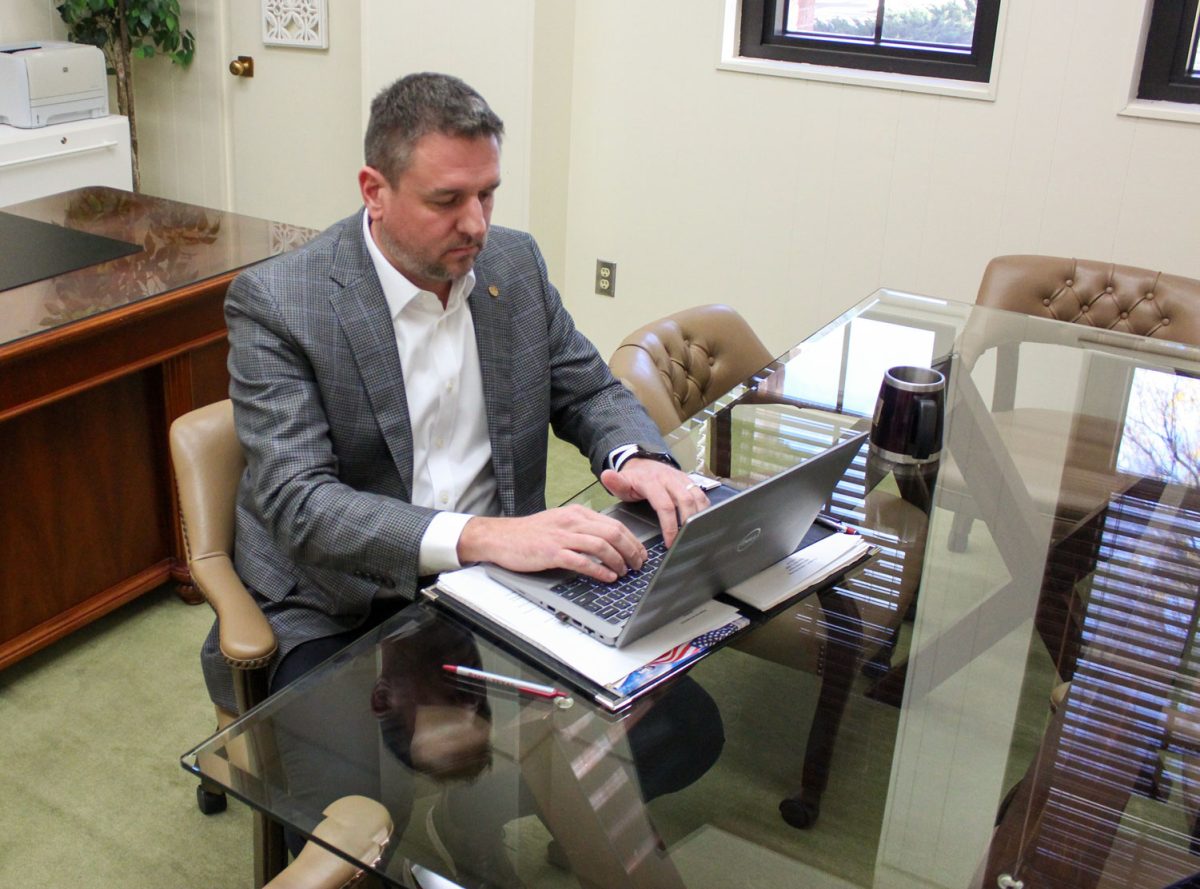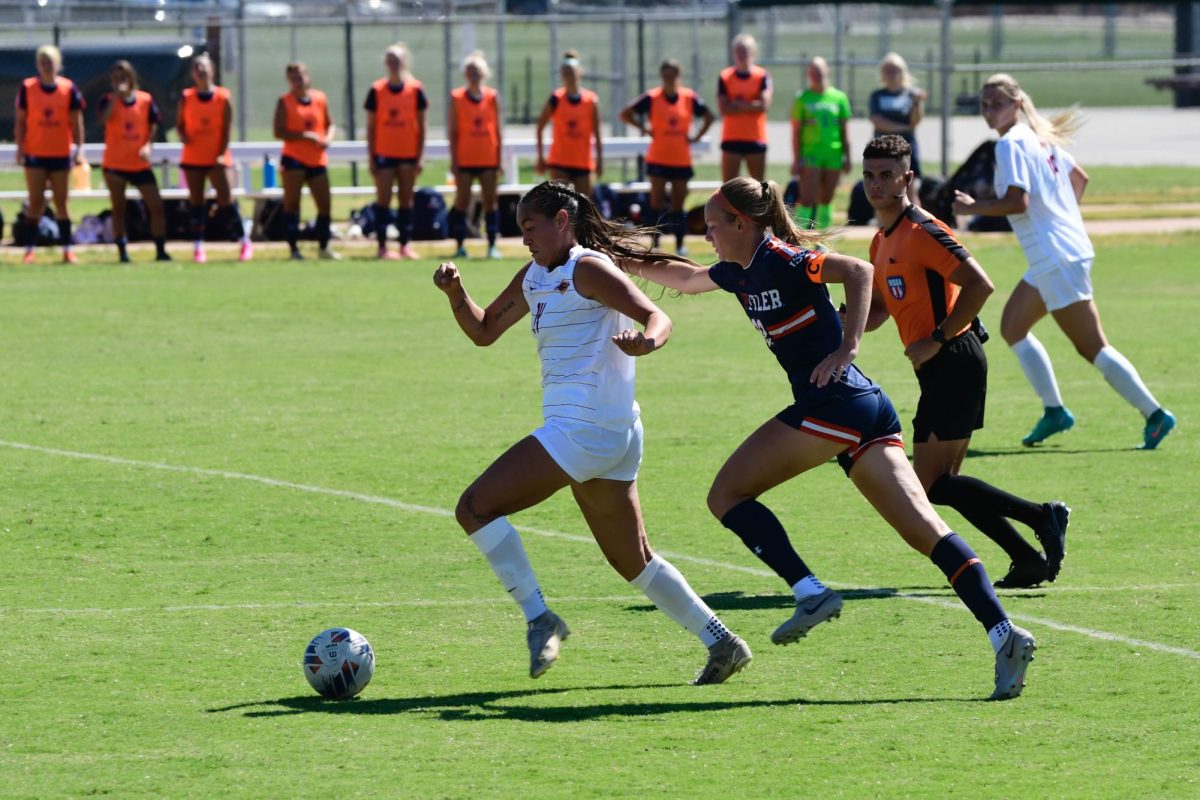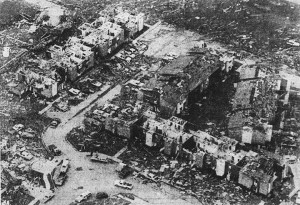
Almost 40 years ago, a massive F4 tornado tore through Wichita Falls, in an event that the Dallas Times Herald and Wichita Falls Times labeled Terrible Tuesday.
In a time where spring storms and weather alerts were common, a storm like this was not.
Within two days of the tornado touching down the death toll had risen to 49 and an estimated 5,000 residents were homeless, according to a Wichita Falls Times article by Rocky Scott and Phil Ringman.
The destructive storm crippled the city, displacing an estimated 10 to 20 percent of the population and estimations up to $278 million in damage, becoming the fifth most deadly tornado in Texas history, according to the National Oceanic and Atmospheric Administration.
Impact on MSU
Structurally, the campus was one of the safest places to be during the storm, according to former President Jesse Rogers, who at the time was academic vice president.
Rogers recalls windows of the Hardin building being found broken out with blood splattered from people punching them to escape the incredible storm.
Luckily, according to Rogers, only a small section of the University was hit.
“It looked like it was going over the south of the school,” said Rogers. “Everything east of the coliseum and the president’s home was completely destroyed. It looked like Hiroshima from Midwestern Parkway downward. All I could see was dust, two-by-fours and foundations of homes.”
The damage to the university’s property was minimal; however, the roof of the coliseum was ruined and the porch of the president’s house was ripped off. The real destruction came when they saw how many students and faculty had lost their homes due to the storm.
“We had so many faculty that completely lost their homes,” said Rogers.
Rogers said he met with the deans to figure out what the school was going to do about classes for the rest of the spring semester.
“We decided we were far enough along in that semester, that we were all going to get together and help those faculty who had lost everything, report their grades, and tell everybody we are done,” said Rogers.
The semester would have ended on May 17, but Rogers said there were so many problems as a result of the tornado that there was nothing to do other than carry on the best way they could and let every professor choose what to do with their class.
“I will never forget how professional this school was and how people put things in priority when a tragedy like that hits,” said Rogers. “The way this faculty pulled together was a really proud moment for me.”
Playback of the tornado
Rogers said he recalls the Tuesday of the tornado being windy and stormy.
“I paid some attention to it,” Rogers said. “But it didn’t alarm me.”
He mentioned that thunderstorms and weather alerts weren’t as unusual of an occurrence in 1979 like they are today.
“In that period of time, it seemed like we lived under severe weather alerts,” said Rogers.
Rogers recalls interviewing Fred Davis as a professor in dental hygiene that afternoon before the storm hit.
“We walked out of the office after the interview and I could hear some rumbling in the sky and the clouds were rolling,” said Rogers. “But we were almost accustomed to it.”
By this time it was almost quitting time and Rogers left to go home like any other day.
“I lived right down on Taft, and on the way home I thought I heard a train,” said Rogers. “I pulled into the garage and stood out in the front yard and my daughter drove in and said Daddy you better get in the house. There’s a tornado coming.”
Don Henschel, professor of theater who was also chairing the department at the time, also recalls the beginning of the storm.
“I heard the sirens and went up to look out the second floor windows,” said Henschel. “To the southwest was a huge black storm cell. I thought the storm was as close as the next block.”
Henschel, having never seen a tornado before described it as a confused black mess of cloud that came to the ground near its center.
“It bore no resemblance whatsoever to the one I knew so well from the ‘Wizard of Oz,’” Henschel said.
Rogers too describes seeing one side of a black wall cloud while watching from his front yard.
“It became deafening,” said Rogers. “Cars were driving down Taft, I bet some were going 90 miles an hour, so I knew something was wrong.”
While watching from his front yard, Rogers said pieces of two-by-four and hailstones the size of grapefruits starting falling all around him.
“At that point I thought, you know, I better get out of here,” said Rogers.
After taking cover under the front porch, Rogers said he realized that the storm was going to miss his house and instead go south of the school.
During the storm, Henschel said he and his wife took cover downstairs in their home where the storm passed, fortunately sparing both them and their house.
“When the storm passed, surprisingly, I couldn’t see any damage,” said Henschel. “I got in my truck and headed for the university. Only when I got to the school, a solid mile from my home, did I see where an apartment complex had vanished, and the streets were impassible. The storm had been so large that, while almost two miles away, it had seemed as though it were next door.”
After Henschel realized his family and home were safe, he went out to help friends and staff.
“I made it my business to check on my faculty, several of whom lived in the apparent path of the twister,” said Henschel. “Finding their homes in places where whole city blocks were left with little above knee-high, and some where nothing but the concrete slabs remained, was difficult and unnerving.”
After all were present and accounted for, Henschel said he headed back to an area close to the university that was inaccessible by truck and began climbing though twisted trees and vehicles blocking the streets looking for an elderly professor and her 90-year old mother.
“When I identified her home, I could see a huge tree had smashed through the roof,” said Henschel. “Crawling inside, I found the two women sitting, dazed and in shock on the sofa, beside the tree trunk, in what had been their den, now open to the night sky. I got them out to my vehicle and took them to my home, where a dozen folks stayed for the next two weeks until better accommodations could be found.”
Rogers too went to help after realizing the storm was going to miss his home. A friend of his was living in Quail Creek apartments, directly in the path or the tornado. After making his way past emergency personnel blocking off all of the telephone lines that had fallen , he managed to make it to her apartment.
“She was just coming out of her apartment because the only thing left standing in her apartment was her bathroom,” said Rogers. “Every wall in the place was gone.”
After making sure she was alright, Rogers said he went home to get an axe and crowbar in order to get her car out of the garage.
“It was in bad shape and we finally broke a door off of it so that she could get in it to get around,” said Rogers.
The aftermath
“A war scene: For a stretch of 12 miles,” wrote Bob Rivard, a staff writer from Dallas Times Herald in the April 11 issue of the paper. “Sikes Senter, a symbol of affluence and prosperity, was gutted and threatening to collapse.”
Phil Ringman, a staff writer for the Wichita Falls Times wrote that the half-mile wide tornado touched down west of Memorial Stadium.
“During its 15-minute trip across eight miles of the heavily populated south side, it destroyed an estimated 2,000 homes and 300 businesses,” said Ringman. “And caused damage estimated between $75 and $300 million.”
Throughout the upcoming weeks and months, Henschel said he was very impressed with large businesses helping the local community.
“I do recall being very impressed with large national businesses bringing aid,” said Henschel. “McDonald’s trucks that simply gave burger meals to workers, trucks full of Levi’s. etc. I don’t often credit big business with generosity but there were multiple examples.”
Rogers said there were unusual things that had happened because of the storm. For instance, a big plastic bull used in front of a restaurant on Jacksboro Highway was picked up by the tornado and was found roughly 20 miles north in Oklahoma.
Rogers noted that the storm is an experience that he would never forget.
University implications
Fortunately, for students, whether they have experienced a tornado or not, they should be safe here on campus in whatever building they choose.
“This campus is one of the safest places to be,” said Rogers. “These buildings are brick and steel.”
Not only are the buildings structurally safe but the university has a handful of emergency alerts via text message and email alerting students to take shelter if and when a tornado is near, along with a tornado siren located near the Wellness Center to indicate a tornado warning. A warning means tornado activity has been identified and there is a distinct threat of a tornado, whereas a watch means conditions are favorable for severe thunderstorms to form and that a few storms may be capable of producing a tornado.
“We try to convey to our students we are a tornado shelter here,” Rogers said.
Along with alert systems students can also depend on their resident assistants to be properly trained in emergency procedures like a tornado. Sabina Marroquin, a junior in history and a resident assistant in Killingsworth who has been a resident assistant for four semesters says RA’s have a few days of training every semester before move-in day that includes crisis training which goes over emergency procedures.
“In the event of a tornado, it is my job to make sure my girls are taken care of,” said Marroquin. “I would help keep residents calm and move them from their rooms to the center of the building, specifically to the hallways of the first and second floors.”
Although Marroquin said she feels prepared in her crisis training and feels confident that she is equipped with the necessary knowledge and skills to take action in the event of a tornado, no matter where she is on campus, she doesn’t believe all students are.
“Students in general may be a little less informed because crisis training isn’t heavily stressed and isn’t easily accessible to students,” said Marroquin.
PRODUCED THANKS TO OUR ADVERTISERS
First Bank
Student Affairs & Enrollment Management
Department of Foreign Languages
The Yard Food Truck Park
Dr. Billie Doris McAda Graduate School
Career Management Center
Frank & Joe’s Coffee House







